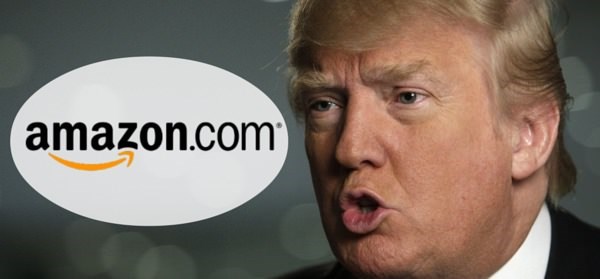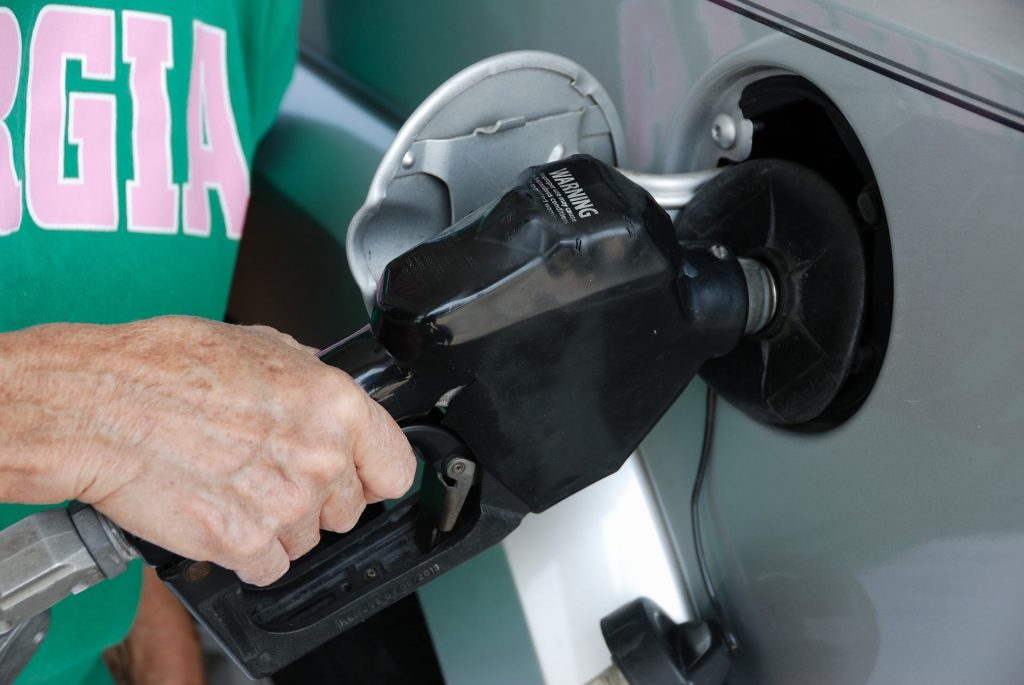
While the country was consumed with the Charlottesville debacle last week, President Trump was busy reigniting his PR campaign against an American retail staple: Amazon.
In a tweet composed last Wednesday, Trump said:
“Amazon is doing great damage to tax paying retailers. Towns, cities and states throughout the U.S. are being hurt – many jobs being lost!”
This anti-Amazon rhetoric is of course, nothing new for the president. During his campaign he made his opinions of the company well known. Going as far as to threaten the company before even being elected to office, the then-presidential candidate said, “believe me, if I become president, oh, do they have problems. They’re going to have such problems.”
Now, seven months after taking office Trump seems to be living up to his menacing promise. But is there any truth to Trump’s claims that the Amazon is both destroying jobs and “stealing” money from the taxpayer?
The Ultimate Job Destroyer?
The American people are not united on much these days, or so it would seem. However, if you wanted to give Americans a reason to unite against their leader, threatening their Amazon Prime accounts would be a surefire way.
Earlier this year, a report produced by the Consumer Intelligence Research Partners (CIRP) found that over 80 million people in the United States hold Amazon Prime memberships. A number worthy of recognition especially considering that it has doubled in less than two years.
Amazon has revolutionized the American retail experience. Not only do Prime members get free two-day shipping on essentially any item they wish to purchase from food to electronics, but members also have access to Amazon’s library of streamable films, shows, and music at their fingertips. Need an item in less than two days? No problem! Amazon Now offers delivery services in under an hour for participating products. Even more amazing, Amazon Prime now also dabbles in the restaurant delivery service business competing with the likes of Uber Eats and GrubHub.
And yet, in spite of all these subcategories, each requiring its own set of employees, Donald Trump has accused Amazon of inhibiting job growth in the United States. As of January of this year, Amazon had 306,800 employees and a promise to hire an additional 100,000 full-time employees by mid-2018.
On their own these numbers are impressive, but they do not account for the additional employees who will find future part-time employment via Amazon’s participation in the sharing economy.
Amazon Enters the Sharing Economy
Receiving an Amazon Prime package as an adult is akin to opening up a Christmas present from Santa Claus as a child. You don’t know how the package arrived, but it doesn’t matter. You asked for it and 48 hours later it appeared on your porch as if by magic. Unfortunately, there is no mythical Amazon being responsible for delivering these packages. There is, however, an army of Amazon delivery personnel who operate on the sharing economy model.
Like the “Uber of packages,” Amazon couriers work when they want. As with the rest of the sharing economy, this allows millennials interested in side hustles or others looking to get ahead financially the opportunity to work around their own schedules.
In the few years since the sharing economy has grown in the United States we are already seeing the benefits it brings both in job creation and consumer satisfaction. Amazon’s restaurant delivery service works the same way.
As Americans are generally discontent to live mediocre lives with mediocre salaries, these side hustles have become essential to living a full and prosperous life. Amazon’s contributions to the sharing economy as well as the overall job creation in the country is something worthy of praise. Yet instead, the company’s reputation is being eviscerated by the President in very public social media posts.
Why All the Condemnation?
Trump has made the claim that Amazon hasn’t paid its fair share of taxes and is thus, stealing money from the American people. This is entirely untrue, but what Trump is implying by this comment hits at the core of his real problem with the company: he’s a brick and mortar enthusiast.
After Trump’s tweet, Politifact dissected the president’s post to decipher which, if any, of his claims were true. According to the site:
”While Amazon takes advantage of tax breaks and loopholes, it pays federal corporate tax, and charges sales taxes in 46 U.S. jurisdictions. Last year, Amazon paid $412 million in federal, state, local and foreign taxes.”
So if it’s not about destroying jobs or stealing tax dollars, what is Trump so mad about?
Trump is a traditional businessman who made much of his money through the real estate business. By nature, the virtual business realm is almost completely foreign to him. Trump has made his living buying and selling physical space. Subscribers to the belief that Amazon is the boogieman of the brick and mortar world will appreciate this, as they see Amazon and other online retailers as a threat to their existence.
As Jeffrey Tucker says:
“It’s not just about ideology; it’s a battle of economic interests. Trump is joining an emerging war between old-style economic institutions, rooted in brick-and-mortar and nation-state loyalism, vs. new-style digital institutions that span the globe and empower producers and consumers directly
But it is not and never has been the president’s job to decide which companies succeed and which ones fail. That power rests with consumers who utilize the power of their own purses at their own discretion. Unfortunately for Trump and other brick and mortar protectionists, Amazon is constantly proving that consumers prefer to use its retail platform above all other options. For a president to openly condemn a company for outperforming the competition is antithetical to the free market that Trump pretends to support.
At the end of the day, Trump is worried about his own interests, not the interests of consumers.
Hitting the nail on the head perfectly, Tucker explains the situation:
“Consider that Trump is the consummate physical-world capitalist. He builds towers, casinos, hotels, country clubs, all rooted in real estate, and all with a gawdy 1980s-style aesthetic. With that comes “the art of the deal.” The deals are done on golf courses, in “old boys” clubs, through personal networks. It’s about meeting in board rooms with mayors and city planners and trading favors. He hires contractors to dig and build and rent. He puts his name on large structures and they reach to the skies to proclaim his personal glories.”
But there is another layer to Trump’s disdain for Amazon. And like many of Trump’s stances, this one is also rooted in personal drama.
Facts have never meant much to our president, but any criticism cast in his direction has quickly garnered his attention. Jeff Bezos, the CEO of Amazon, recently purchased the Washington Post, a publication that hasn’t shied away from attacking Donald Trump.
Addressing this issue head on, Trump has even made statements questioning Bezos’ motives:
“I have respect for Jeff Bezos, but he bought The Washington Post to have political influence, and I gotta tell you, we have a different country than we used to have.”
He later continues this line of thinking saying:
“He owns Amazon. He wants political influence so that Amazon will benefit from it. That’s not right.”
Unfortunately for Trump, he has chosen to attack a mighty monument of consumerism. Amazon’s services are just too good and too plentiful to fall victim to Trump’s attacks. In fact, Amazon Prime’s 80 million subscribers outnumber the 57.6 million people who voted in the 2016 election. Sorry President Trump, consumers have already voted with their dollars and they choose Amazon.
Brittany Hunter
Brittany Hunter is an associate editor at FEE. Brittany studied political science at Utah Valley University with a minor in Constitutional studies.
This article was originally published on FEE.org. Read the original article.




